
Public space is an indispensable element of urban space and urban life. It enriches the spaces of the city and encourages the establishment of activities, and in turn flourishes the everyday lives of the residents.
Urban public spaces have been considered an essential part of cities throughout history. Over the span of urban life, public spaces have continuously reflected the complexities of their cities’ cultural, social, and economic contexts. Public spaces play a particular role in the life of urban areas, whether as memorable, accessible, or meaningful place.
I.History
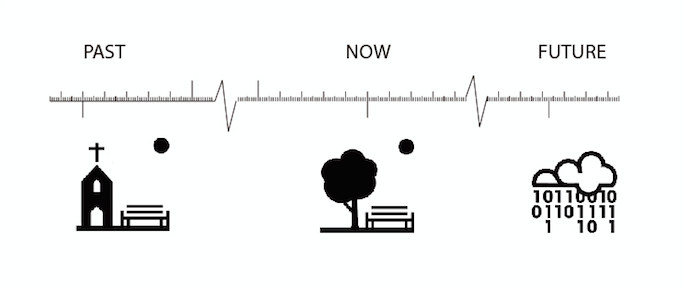
As a part of the urban landscape, public space contains centuries-old history in both the Western and Eastern world. Its definitions are also comparatively different. Including the Greek agora, Roman forum, medieval market places, piazzas, residential squares and American city parks, all these historic identities and physical places have become the foundation stone for the requirement of today’s urban space qualities.
The form and function of Western urban public space today has its origin in the ancient civilisations. In the past such as the Greek agora and the Roman forum are both about the religious gathering, the public space is not that “public”, but with the meaning of status and power. In ancient Greek, only civic citizen can enter the agora, which was only 1/7 of the population, women and slaves are not allowed. For now, the public space is the physical space where public can enter and conduct activities. In the future, the public space has the tendency to evolve into digital spaces. Like nowadays, we can chat and play chess with friends online rather than meeting in a public plaza.
II. How much public space does a city need?
Dr.Joan Clos stated that “The proportion of urban areas dedicated to streets and public spaces is a crucial feature of the spatial plans of cities. Indeed cities that have adequate street and public spaces and greater connectivity are more livable and productive.“ And according to UN habitant and World Health Organisation, the suggestion/standard of the portion of the public space is 10 sqm per person. According to the UN habitant report, the percentage of land allocated to street, shows a very important disparity of land allocated to the street, varying from 6 per cent of urban land up to 36 per cent. This disparity is in itself a good entry point to describe the different consequences that land allocated to street can have in the four functions of the street . The top third of cities range between 24.8 and 36 per cent of urban land allocated to the street. All of them can be considered historically planned cities. Cities in the middle third range between15.7 and 24.8 per cent of land allocated to streets, including well-planned cities and some of which have weak planned structure. Finally, cities in the bottom third range between 6 and 15.7 per cent, which we can consider weakly planned cities, with a few exceptions in some neighborhoods. The large disparity in percentages between low- end and top-end cities is noticeable.
III. Public Space Users
With failed attempt to find the relation with the size of the public space and density/active use or say, good quality of public. I realised that public Space is not about the functions, but for people who use it, It is a shared experience, rather than a fixed physical place. So I category 18 different kind of typical public space user, such as market seller, market goer, amateur gardener, commuter, local artist, picnic enthusiast,busker, book reader, dog walker, tourist, job seeker, child, local elderly, local teenager,office worker, extreme sports lover as skateboarder and BMX rider. And then match them with 21 different characteristics of public spaces as soft surface, hard surface, loud sound, moderate sound, little noise/quiet, space to sleep, table, fresh air, shelter, nature, sitting, heat, water ,space to clean, open populated space, open unpopulated space, private secluded space,car and charger space,exposed to natural elements, relax and toilet.
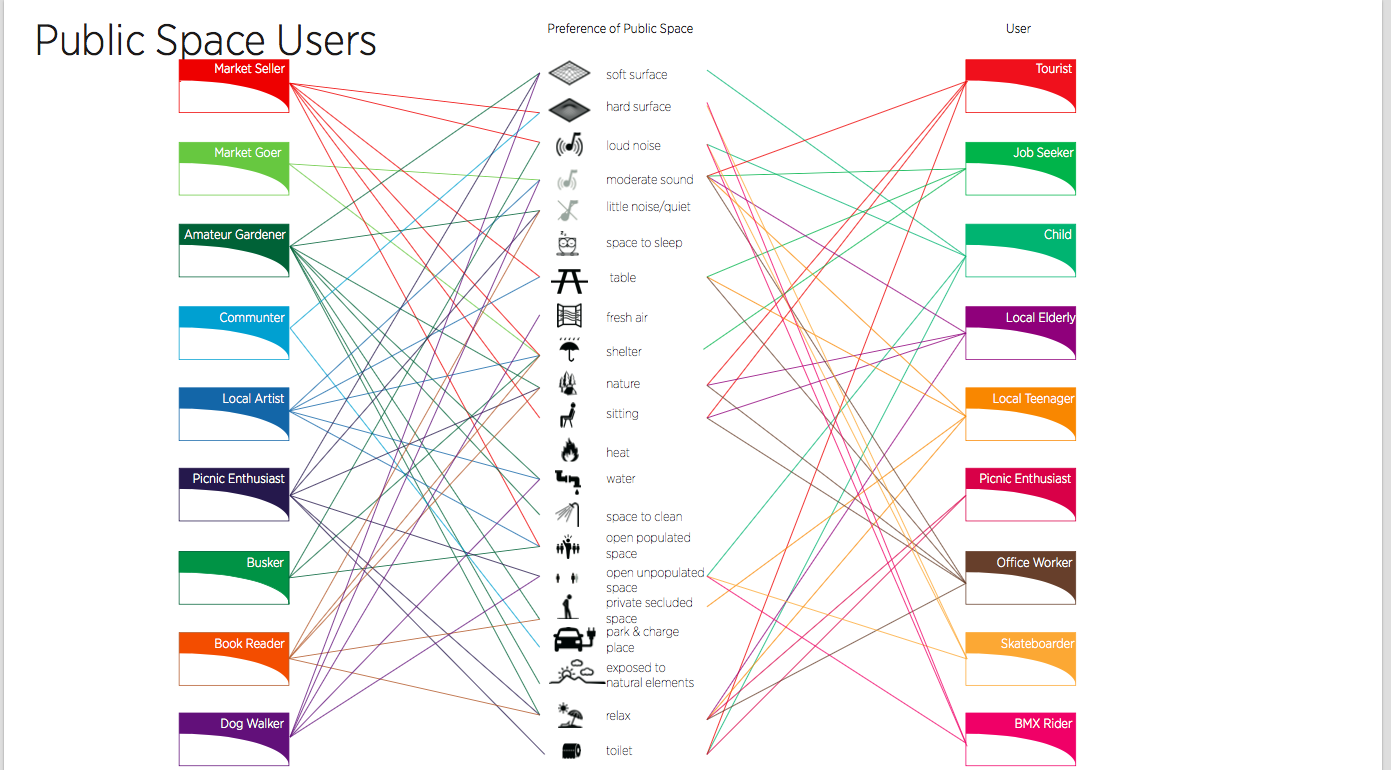
IV. Self-Sufficient Neighbourhood Prototype
In our 1×1 km self-sufficient neighbourhood, in order to meet with people’s demand and requirement, 16 different kind of public space are created to match with different peoples’ need. The 16 different public space(Permaculture Park,Neighbourhood Park, Observation Point, Urban Garden, Culture Event, Art Action, Fitness Trail, Dog Park,Civil Plaza, Football Field, Ice Rink, Urban Camp, Movable Food Service,Second Hand Market) can be categorised into 4 parts: Parks/Nature,Events/Leisure, Health/Sport and Ametities/Solidarity.
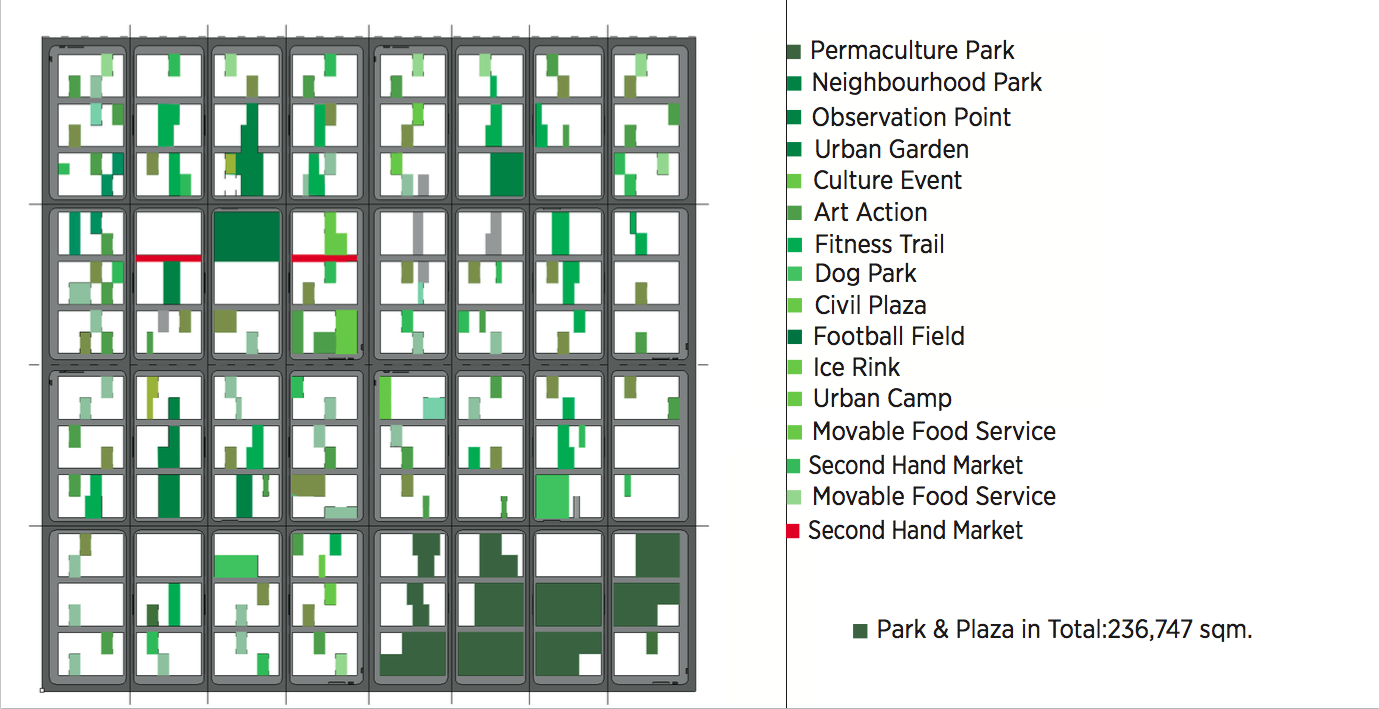
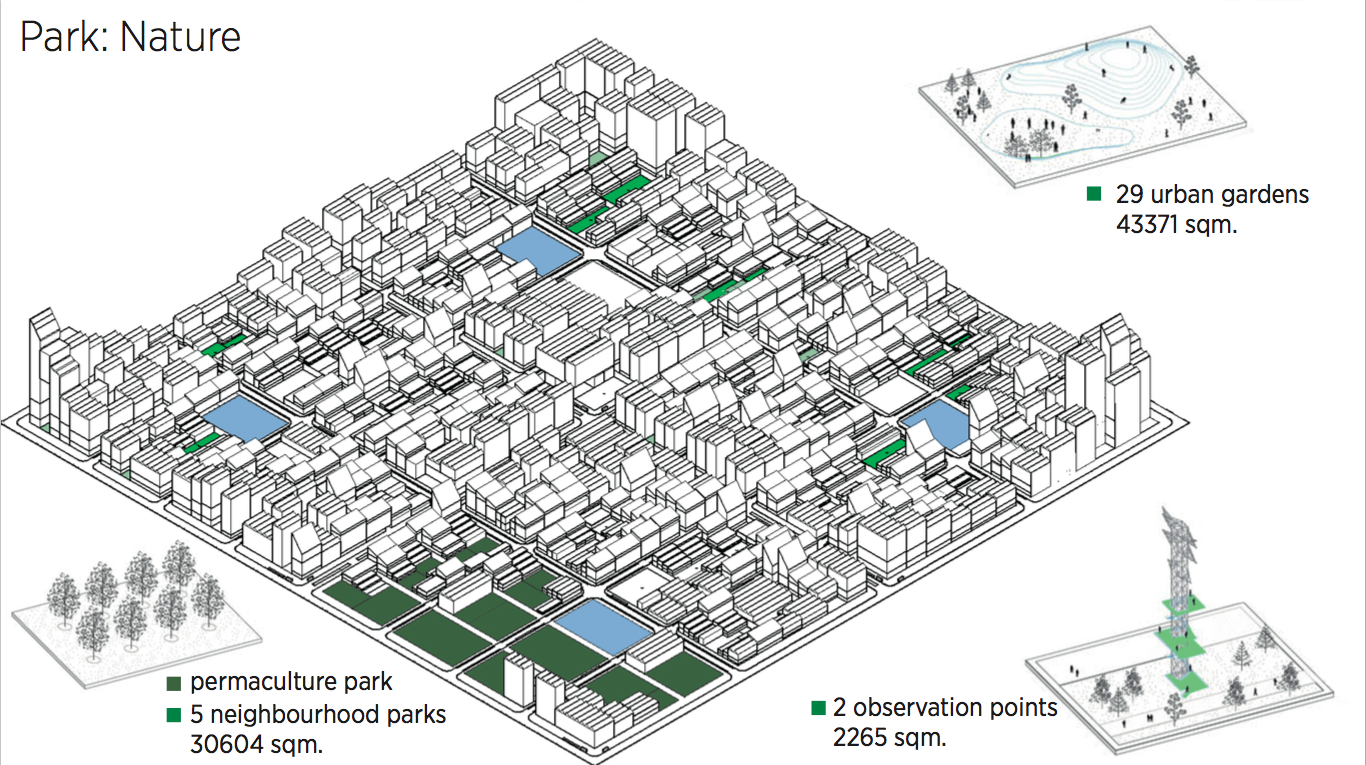
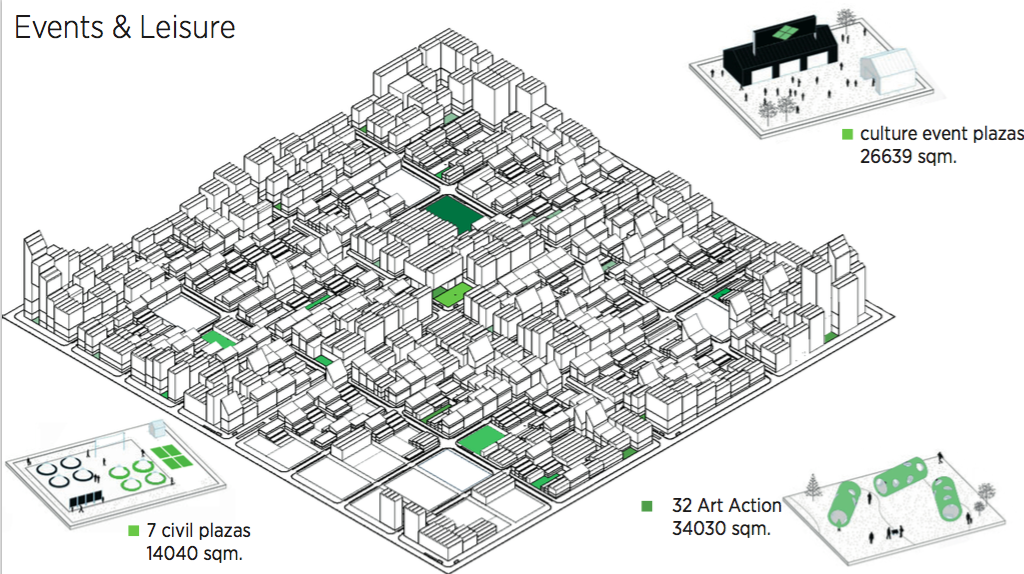
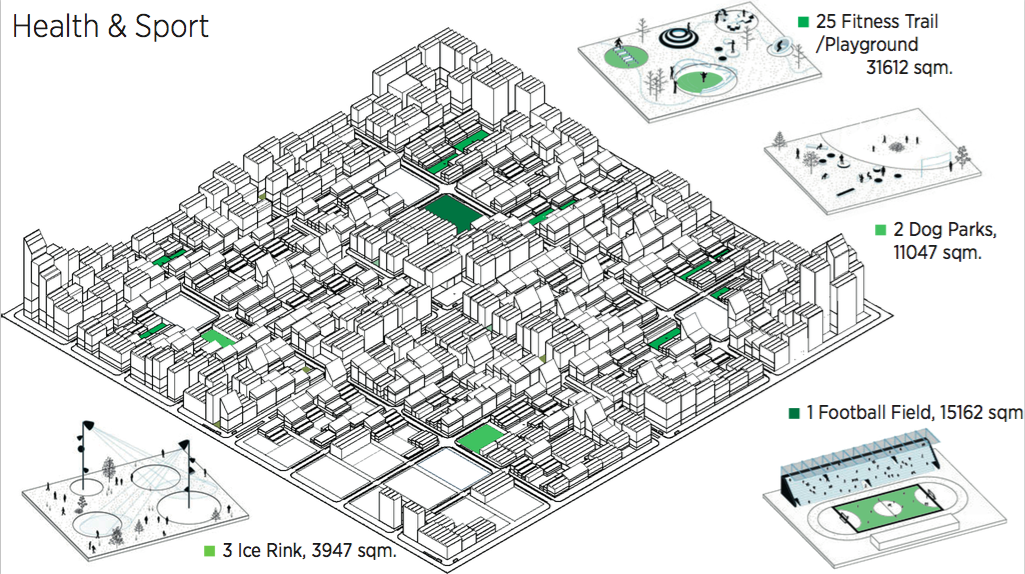
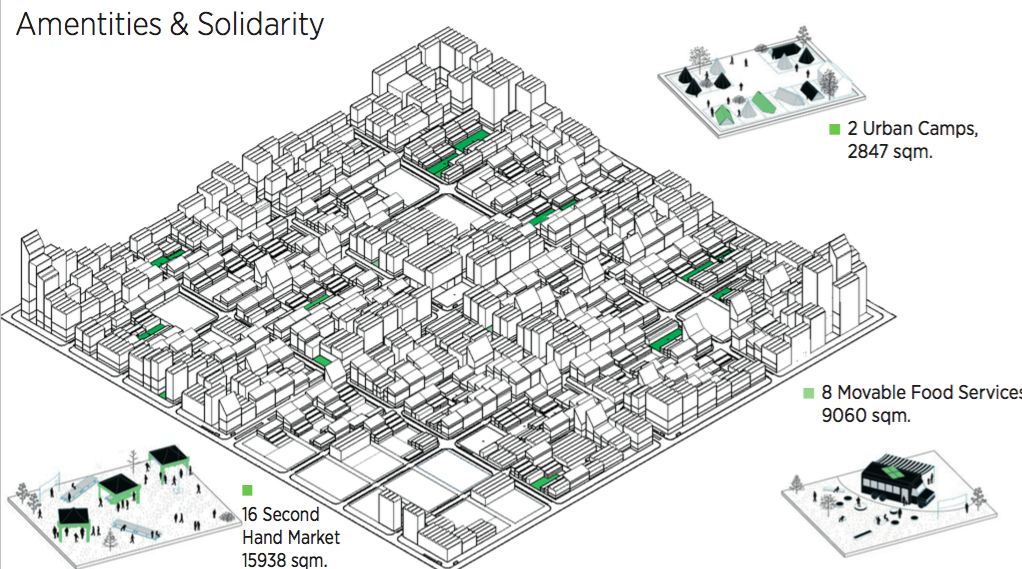
And introducing a smart wifi lighting fixtures in the neighbourhood, which will use solar as energy source will spread out the neighbourhoods’ WIFI source. The WIFI radius of the neighbourhood:
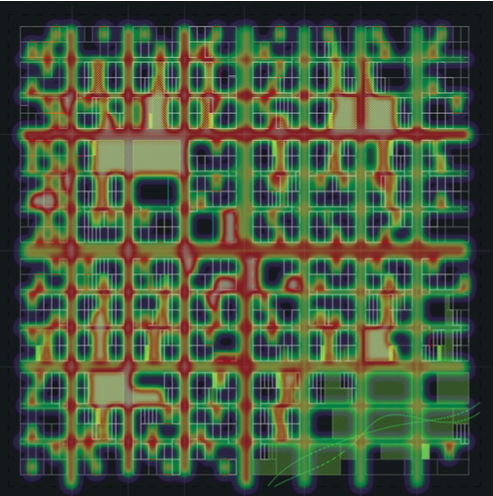
References:
Alcock, S.E., Osborne, R., 2007. Classical archaeology. Blackwell Pub., Malden, MA.
Carmona, Matthew, Claudio de Magalhães and Leo Hammond, Public Space: The Management Dimension, London:Routledge 2008
Low, S.M., 2000. On the plaza : the politics of public space and culture. University of Texas Press, Austin.
Gehl, J. (2010), Cities for People, Washington – Covelo – London: Island Press.
Gehl, J. (1987), Life Between Buildings: Using Public Space (transl. by Koch, J.), New York: Van Nostrand Reinhold.
Gehl, J. and Gemzøe, L. (2004), Public Spaces, Public Life, Copenhagen: The Danish Architectural Press.
Gehl, J. and Gemzøe, L. (2000), New City Spaces, Copen- hagen: The Danish Architectural Press.
Gehl, J. et al. (2006), New City Life, Copenhagen: The Danish Architectural Press.
Hölscher, T., 2007. Urban Spaces and Central Places: Greek, in: Alcock, S., Osborne, R. (Eds.), Classical Archaeology. Blackwell, Malden, MA, pp. 164-181.
Madanipour, A., Public and private spaces of the city. London: Routledge 2003.
Mumford, L., The City in History: Its Origins, Its Transformations, and Its Pros- pects. New York, NY: Harcourt, Brace & World. 1961.
National Park Service, 2007. A History of the National Mall and Pennsylvania Avenue National Historic Park.
http://www.nps.gov/nationalmallplan/Documents/mallpaavhistory.pdf
UN-Habitat (2013.) Streets as Public Spaces and Drivers of Urban Prosperity. Nairobi.
Public Space for self sufficient neighborhood is a project of IaaC, Institute for Advanced Architecture of Catalonia developed at Master in City and Technology in 2015 by:
Student: Chenghuai Zhou
Faculty: Vicente Guallart and Rodrigo Rubio
Assistants: Ruxandra Iancu and Alessio Verdolino